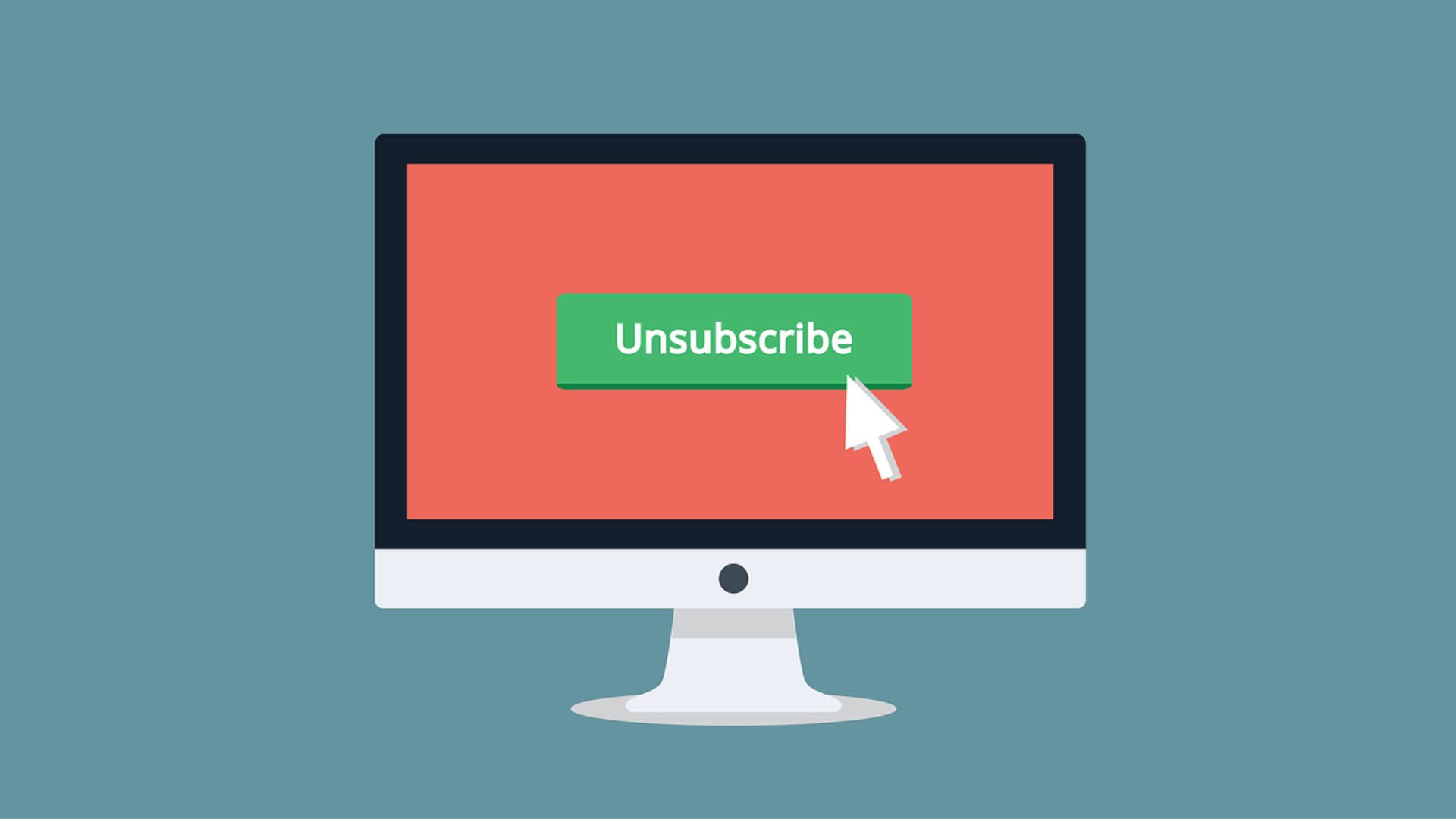Sending bulk cold emails can be an efficient way to reach a wider audience. However, it requires careful execution to avoid being marked as spam.
In this article, we will explore essential tips for sending bulk cold email campaigns effectively. Learn how to target the right audience, obtain permission, personalize your content, and utilize reliable email marketing platforms.
Discover how tracking and analyzing campaign performance can help optimize your approach for better results.
By providing value and relevance, you can enhance your chances of success and establish meaningful connections with potential customers. Master the art of bulk cold emailing and propel your business forward.
Let’s dive in!
What are Bulk Cold Emails?
Bulk cold emails refer to the practice of sending a large number of unsolicited emails to potential customers or prospects without prior contact or permission. These emails are also typically part of a marketing strategy to promote products, services, or business opportunities.
However, the effectiveness of cold emails varies, with many recipients often considering them intrusive or irrelevant.
When crafting cold emails, it is crucial to adhere to best practices to avoid ending up in the recipient’s spam folder. Email service providers and spam filters are designed to detect and divert such emails.
To increase the chances of successful cold emails, marketers should focus on personalization, relevance, and value in their messages. Furthermore, maintaining a positive sender reputation is vital to avoid being blacklisted by email providers.
By using email marketing tools and services, businesses can streamline their cold email efforts and manage recipients’ inboxes more efficiently.
However, being cautious and complying with relevant regulations is also essential. Doing so ensures that your bulk cold email campaigns do not annoy potential customers or violate anti-spam laws.
Benefits of Sending Bulk Emails
![]() Source: Unsplash
Source: Unsplash
Sending bulk cold emails can offer several benefits for businesses looking to reach a wider audience and expand their customer base.
First and foremost, it allows for a cost-effective means of communication, reaching many potential customers with minimal expenses.
However, marketers must ensure that their emails do not end up in the spam folder by avoiding spammy content and adhering to best practices.
When crafted thoughtfully, cold emails can be personalized and relevant, increasing the likelihood of engagement and conversion. They can also be part of a targeted cold email campaign, helping businesses to promote their products or services effectively.
By using reliable email service providers and understanding spam filters, marketers can ensure their messages reach the recipients’ primary inboxes.
Why Do Email Accounts Get Blocked by Sending Cold Emails?
Email accounts can get blocked for sending cold emails due to various reasons. When businesses or individuals send a high volume of unsolicited cold emails, it can trigger spam filters and lead to blocking by email service providers.
If done correctly, cold emailing can result in a positive sender reputation. As a result, it further increases the likelihood of being flagged as spam.
Additionally, when recipients mark cold emails as spam or report abuse, it impacts the sender’s credibility. This makes it more challenging to deliver future emails successfully. This is also particularly true when using a bulk cold email service that might need proper safeguards against spamming.
Therefore, adhering to anti-spam regulations is essential to avoid being blocked. Send relevant and personalized cold emails to recipients with explicit consent or legitimate interest in the content.
Building a positive sender reputation and using reputable email marketing services can help businesses maintain successful cold emails without getting blocked.
Moreover, properly managing cold emails ensures deliverability. It also helps foster positive relationships with recipients, increasing the chances of successful conversions.
To enhance your understanding of this topic, consider reading our comprehensive guide on sending bulk email Gmail without getting blocked, which provides in-depth strategies to ensure your mass emails reach the intended inboxes.
How to Send Bulk Cold Emails [15 Tips]

1. Use Cold Email Templates
Using cold email templates is essential to streamline bulk email campaigns effectively. These pre-designed templates save time and ensure a consistent and professional appearance in your outreach.
Utilizing these templates allows you to optimize the email creation process and focus on crafting compelling content rather than starting from scratch every time. You can customize the templates to align with your brand’s tone and voice, creating a personalized touch for each recipient.
Additionally, consistent branding and messaging increase brand recognition and build trust with your audience.
Lastly, regularly update and refine your templates based on campaign performance and feedback to improve your cold email strategy continuously.
2. Personalize Your Emails
Personalization plays a pivotal role in successful bulk cold emails. Addressing recipients by their names and tailoring content to their specific interests and needs also boosts engagement and relevance.
By gathering data about your audience and using it effectively, you can create personalized messages that resonate with each recipient.
However, personalization goes beyond simply inserting names. It involves understanding your audience’s pain points and preferences to offer valuable solutions. [1]
A personalized approach also fosters a sense of connection and trust. This increases the likelihood of recipients opening and responding positively to your cold emails.
Therefore, use personalization as a core aspect of your email marketing strategy to achieve better results and build stronger relationships with your audience.
3. Write Attention-Grabbing Subject Lines
Crafting compelling subject lines is crucial for boosting open rates in bulk cold email campaigns. A well-crafted subject line lets recipients open the email and discover the content. [2]
Avoid using spam-triggering words or phrases that might lead to emails being marked as spam. Instead, focus on creating concise, impactful subject lines that align with the email’s content.
Moreover, experiment with different approaches to see which resonates best with your audience. A captivating subject line also sets the stage for a successful email campaign by piquing recipients’ curiosity and encouraging them to engage with your message.
4. Use a Reputable Email Service Provider
Choosing a reputable email service provider is vital for the success of your bulk cold email campaigns. A reliable provider also ensures high deliverability rates, reducing the chances of emails being marked as spam. [3]
However, even reputable platforms are not immune to deliverability challenges. Many marketers frequently encounter issues with Mailchimp emails going to spam due to poor sender reputation, engagement inconsistencies, or incorrect authentication settings. Ensuring proper SPF, DKIM, and DMARC configurations, along with maintaining high engagement rates, can help improve inbox placement and prevent critical emails from being filtered out.
They employ sophisticated anti-spam measures and maintain good relationships with internet service providers, enhancing your sender’s reputation.
In addition, reputable providers offer features like email tracking and analytics, enabling you to monitor the performance of your campaigns effectively. With their robust infrastructure and technical support, you can trust that your emails will reach recipients’ primary inboxes reliably.
Therefore, investing in a reputable email service provider is a strategic move to optimize your email marketing efforts and foster meaningful connections with your audience.
5. Validate Your Email List Before You Send
Validating your email list is another crucial step in ensuring the success of your bulk cold email campaigns. A validated list removes invalid or inactive email addresses, reducing the likelihood of bounces and spam complaints.
By regularly scrubbing your list, you maintain a clean and engaged subscriber base, leading to higher deliverability rates and improved campaign performance. Doing so also aligns with email regulations, demonstrating compliance with anti-spam policies and respecting recipients’ preferences.
This process enhances your email marketing efforts and helps you build a positive reputation as a sender. As a result, it increases the chances of your emails reaching the recipients’ primary inboxes.
6. Include an Unsubscribe Link

Including an unsubscribe link in your bulk cold emails is critical for maintaining compliance with email regulations and respecting recipients’ preferences.
The link allows recipients to easily opt out of your email list if they no longer wish to receive communications from you. By providing this option, you demonstrate transparency and professionalism, which can positively impact your brand reputation.
Moreover, honoring unsubscribe requests promptly is essential for building trust with your audience and reducing the likelihood of spam complaints.
Incorporating an unsubscribe link is a responsible and ethical approach to cold email marketing. It fosters a more positive and engaging relationship with your recipients.
7. Use a Real Sender Address
An authentic and recognizable sender address is crucial for building trust and credibility in bulk cold email campaigns. Recipients are likelier to open emails from a familiar address associated with your brand or business.
Therefore, avoid using generic or suspicious sender names that might raise spam alerts and lead to your emails being ignored or flagged.
A genuine sender address helps establish a transparent and authentic communication channel with your audience. It also reduces the risk of your emails ending up in spam folders, as recipients are more inclined to engage with emails from senders they recognize and trust.
8. Use a Cold Email Software
Employing reliable cold email software is instrumental in streamlining your bulk cold email campaign. [4]
This specialized tool automates various tasks, saving you time and effort in managing outreach. Its user-friendly interface allows you to create and send personalized emails to your target audience easily.
Cold email software often includes features like email tracking and follow-up reminders, allowing you to monitor the success of your campaigns and stay organized. These tools also usually come with built-in anti-spam measures, ensuring your emails comply with best practices and are less likely to be flagged as spam.
By leveraging cold email software, you can optimize your campaigns for better results and focus on building valuable connections with your audience.
9. Monitor Deliverability and Track Key Metrics
Monitoring email deliverability and tracking key metrics are essential practices to gauge the success of your bulk cold emails.
Deliverability measures how many of your emails reach recipients’ primary inboxes successfully. This provides insights into your email service provider’s performance and the quality of your email list.
Tracking key metrics like open rates, click-through rates, and bounce rates offers valuable data on recipient engagement and the effectiveness of your email content and subject lines.
Analyzing these metrics also allows you to identify areas for improvement, refine your approach, and optimize future campaigns for better results and higher conversions.
Read also: Cold Email Open Rates
10. Add an Email Signature

Incorporating a professional email signature with your name, title, and contact information enhances credibility and branding, fostering trust with recipients.
A well-designed signature also leaves a lasting impression and promotes engagement with your emails. Therefore, include relevant links to your website or social media profiles to encourage further interaction.
By consistently using an email signature, you reinforce your brand identity and facilitate accessible communication with recipients.
11. Keep Your Email Sending Volume Low
Maintaining a gradual increase in email-sending volume prevents spam flags and safeguards your sender’s reputation. A controlled sending volume also reduces the risk of being marked as spam.
Start with a smaller email batch and gradually scale up as you monitor results. This approach ensures better deliverability and engagement. Keep a close eye on recipient responses and adjust the sending frequency accordingly.
By avoiding sudden spikes in email volume, you enhance the chances of reaching recipients’ primary inboxes and improve overall campaign effectiveness. Therefore, strive to balance outreach and respect your audience’s preferences.
12. Choose the Right Time to Send Emails
Selecting the optimal sending time for bulk cold emails can significantly impact their success. Experimenting with various days and times determines when your audience is most responsive.
In addition, analyzing open and click-through rates identifies patterns of engagement. So, consider your target audience’s time zones and preferences to maximize impact.
However, non-business hours yield positive results depending on your audience and industry. So, remember that email engagement patterns can change over time, so periodic testing is essential.
By understanding your audience and choosing strategic sending times, you can optimize the effectiveness of your cold emails.
13. Avoid Spam Triggers and Filters
To ensure successful bulk cold email campaigns, familiarize yourself with common spam triggers. Avoid using suspicious phrases, excessive punctuation, or all caps in your subject lines and content.
Instead, craft relevant and personalized emails to increase engagement and reduce the risk of being marked as spam. Stay away from deceptive tactics or misleading claims that may trigger spam filters.
Also, maintain a positive sender reputation by adhering to email best practices and following anti-spam regulations. Regularly check your emails for spam scores using available tools before sending.
Here, a tool like InboxAlly can be valuable. This tool improves your sender’s reputation through positive engagement with seed emails, enhancing deliverability and open rates.
By adhering to email best practices and using InboxAlly to improve your reputation, you can effectively increase the chances of your emails reaching primary inboxes.
You can also use InboxAllys’ free email spam checker to test your spam score and make changes accordingly.
Test your emails with spam filters to identify potential issues and improve deliverability. Keep your content authentic, practical, and free from overly promotional language. Avoiding spam triggers and filters increases the chances of your emails reaching the primary inboxes and connecting with your recipients effectively.
14. Clean Your Email List Regularly
Regularly cleaning your email list is essential for maintaining a healthy and engaged subscriber base. Remove inactive or unengaged contacts to improve deliverability and engagement rates.
An updated list ensures that your emails reach recipients who are genuinely interested in your content. Regular list cleaning also helps reduce bounce rates and spam complaints, which can negatively impact your sender’s reputation.
Therefore, use email verification tools to identify and remove invalid or risky email addresses. Consider re-engagement campaigns for inactive subscribers to rekindle their interest.
Segment your list based on engagement levels to send more targeted and relevant content. Cleaning your email list periodically ensures that your marketing efforts focus on a receptive audience, resulting in higher open and click-through rates.
Lastly, prioritize list hygiene to foster better communication and build lasting relationships with your subscribers.
15. Comply With Email Regulations
Adhering to regulations like CAN-SPAM and GDPR is critical for maintaining a lawful and ethical email marketing strategy. So, learn about the specific requirements and guidelines outlined in these regulations.
Obtain proper consent from recipients before sending marketing emails and provide a clear and easy-to-find unsubscribe option in every email.
Honor opt-out requests promptly to respect recipients’ preferences and avoid potential legal consequences.
Moreover, implement data protection measures to safeguard personal information and ensure compliance with privacy laws. Regularly review and update your email marketing practices to align with changing regulations and industry standards.
Staying compliant mitigates legal risks and builds trust and credibility with your audience.
Final Thoughts
Mastering the art of sending bulk cold emails without getting blocked requires a delicate balance of strategy, personalization, and adherence to best practices.
You can captivate your recipients and enhance engagement using cold email templates and personalized content. Opting for reputable email service providers ensures reliable deliverability and a positive sender reputation.
Regularly validating your email list and including an unsubscribe link demonstrates respect for recipients’ preferences and fosters a trustworthy relationship.
Emphasizing using real sender addresses, cold email software, and monitoring key metrics allows for data-driven optimization and campaign success.
Lastly, email regulation compliance instills confidence in your audience and industry regulators, building a foundation of trust and credibility.
Ready to boost your email deliverability and engagement rates? Try InboxAlly today and watch your emails land in the primary inbox, not the spam folder. With unique seed emails and AI-powered interactions, InboxAlly helps you build a strong sender reputation and connect with your recipients like never before. Book a free live demo now.
Other related articles:
- Bulk Email Guidelines
- How to Send Bulk Emails in Gmail
- How to Send Bulk Emails Without Getting Blacklisted
References:
[1] https://salesblink.io/blog/personalized-cold-emails
[2] https://blog.hubspot.com/sales/sales-email-subject-lines-that-get-prospects-to-open-read-and-respond
[3] https://mailchimp.com/resources/most-used-email-service-providers/
[4] https://www.saleshandy.com/blog/cold-email-software/
